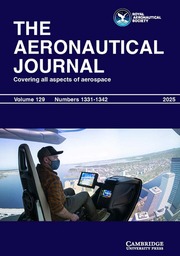No CrossRef data available.
Article contents
Robust control and optimal allocation for vector quadrotor based on model compensation control
Published online by Cambridge University Press: 01 October 2025
Abstract
Standard quadrotors exhibit limited mobility due to inherent underactuation: they only have four independent control inputs, whereas their position and attitude in space are defined by six degrees of freedom (DOF). Consequently, a quadrotor’s pose cannot track an arbitrary trajectory over time. To address this limitation, a novel actuation concept has been proposed, wherein the quadrotor’s propellers can tilt around their axes relative to the main body–forming a vector quadrotor. To achieve more accurate trajectory tracking tailored to the specific characteristics of this vector quadrotor model, we propose a novel control strategy. First, we integrate special orthogonal group SO(3) theory with model compensation control: SO(3) theory enables accurate modeling of the aircraft’s rotational dynamics, while model compensation control mitigates unmodeled dynamics and external disturbances, thereby ensuring robustness across diverse operating conditions. Second, we introduce the sequential quadratic programming (SQP) method for control allocation; this method not only enables efficient computation of control inputs but also optimises the allocation of control resources, which enhances system performance–particularly in complex manoeuvering scenarios. Finally, we integrate the SO(3)-based controller with the SQP-based control allocation module to form a unified control system. The effectiveness of this proposed approach is validated via simulation results. These results demonstrate improved trajectory tracking accuracy and enhanced robustness against disturbances, thus confirming the potential of our method for practical applications.
Information
- Type
- Research Article
- Information
- Copyright
- © The Author(s), 2025. Published by Cambridge University Press on behalf of Royal Aeronautical Society


